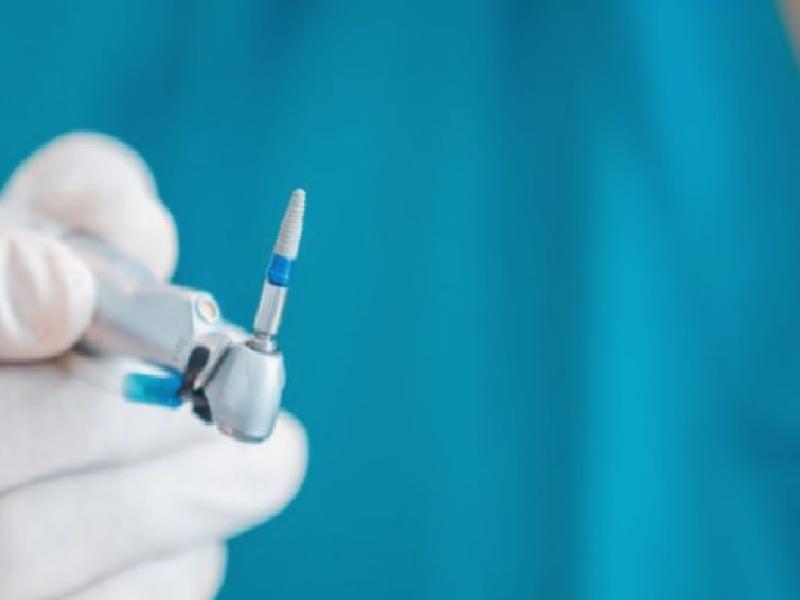Dental Implants
Today, dental implants are the best alternative to natural teeth. They are designed in the form of tooth root to replace lost teeth in the mouth and are produced from titanium. While dental implants provide better speech and chewing functions than traditional bridges and prostheses, they also stand out with aesthetic advantages. In cases where the jawbone is sufficient, dental implants, which are applied with a simple operation, are usually waited for 2-3 months to fuse with the bone.
By Who Is Dental Implants Applied?
Implant operations are performed by specialist maxillofacial surgeons and periodontologists.
How Long Do Implants Live?
Dental implant treatment can be used in the mouth for a lifetime if it is performed by a specialist physician and if the person applies good care.
What are the Conditions Limiting the Application of Dental Implants?
In order for dental implants to be applied, the healthy bone in the target area must have a certain thickness and size. If there is not enough bone, dental implants can be safely applied after bone augmentation (augmentation / grafting) or simultaneous dental implants performed by maxillofacial surgeons to create the required bone. Limits of implant application; It is determined in accordance with the surgical experience of the physician and the medical needs of the patients.
Can Implants Be Rejected By The Body?
It is not possible to talk about failure if the person does not have a disease that prevents or impairs the healing of the wound in general health status (uncontrolled diabetes, previously taken radiotherapy, drugs that affect bone metabolism, etc.) and if he has applied good oral care by paying attention to all the recommendations of the physician. It is a treatment method with very successful results even in risky cases. Correctly performed surgery and a faultless prosthesis after implant treatment will be sufficient for a successful treatment.
Integration of Implants with Bone (Osseointegration)
Osseointegration is the healing of the surrounding of the implant placed in the jawbone by filling it completely with the bone. The prosthesis can be safely applied on implants that integrate with the bone. The healing process of the implant is known as 2-3 months in the lower jaw and 4-6 months in the upper jaw. These processes can be lengthened or shortened according to the person and the case.
In some cases that meet the necessary criteria, the prosthesis can be completed after implant surgery. Today, we apply this protocol, which is called immediate loading, mostly in digital guided implant operations. In these protocols, which require a careful planning step, digital volumetric tomography of the patients and 3D models taken with intraoral scanners are superimposed. Surgical guide plates and upper prostheses are produced by processing these data in private laboratories abroad. Thus, prosthetic superstructures can be applied to the patient’s mouth during the surgical session where the implants are applied.
Placement of Implants in the Jaw Bone (Stage 1)
Dental implant operations can be performed under local anesthesia, general anesthesia and sedation-assisted anesthesia. In any of these methods, the person does not feel any pain.
How Long Does It Take to Place the Implant?
It takes an average of 5 minutes to place an implant.
When to Return to Daily Life?
There is no situation that will prevent the person from continuing his daily life after the operation. Since the person will not eat for 3 hours after the operations under local anesthesia, it is recommended to be full for the operation. Before general anesthesia, it is necessary not to eat or drink anything for 8 hours. Toothless does not occur during the healing period. Temporary prostheses are used when desired.
Prostheses Applied on the Implant (Stage 2)
Prosthetic teeth to be made on the implant can be applied as mobile or fixed in line with your needs and wishes, if there are conditions to fulfill medical obligations.
How to Care for Implants?
The cleaning and care you will apply to the implant prosthesis is similar to the prosthesis made on the tooth. Demonstration and detailed information are given by the physicians in our clinic in the last session of the treatment.
What are the Benefits of the Implant?
* Your healthy teeth make it possible to treat edentulous areas without intervention.
* It allows us to make porcelain teeth that function like your natural teeth in edentulous areas.
*If the treatment of edentulous areas with implant supported, removable prostheses is preferred; These prostheses stay firmly in the mouth and do not move during function.
* Melting that may occur in your jawbone is prevented.
* It provides the recovery of the lost aesthetics and function.
What are the Negative Sides of Implant Treatment?
*Due to the fact that dental implants are produced with high technology and the materials used are valuable, they are more costly than conventional prostheses.
It is a treatment that requires patience and requires absolute compliance.
Is There a Risk of Cancer?
No evidence has been found in the medical literature showing that implants cause cancer.

